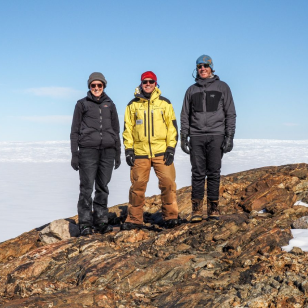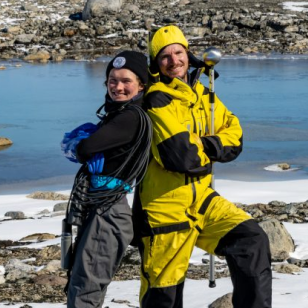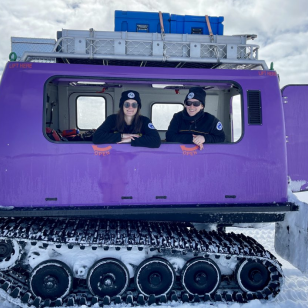SAEF Goes South: Sharon Robinson
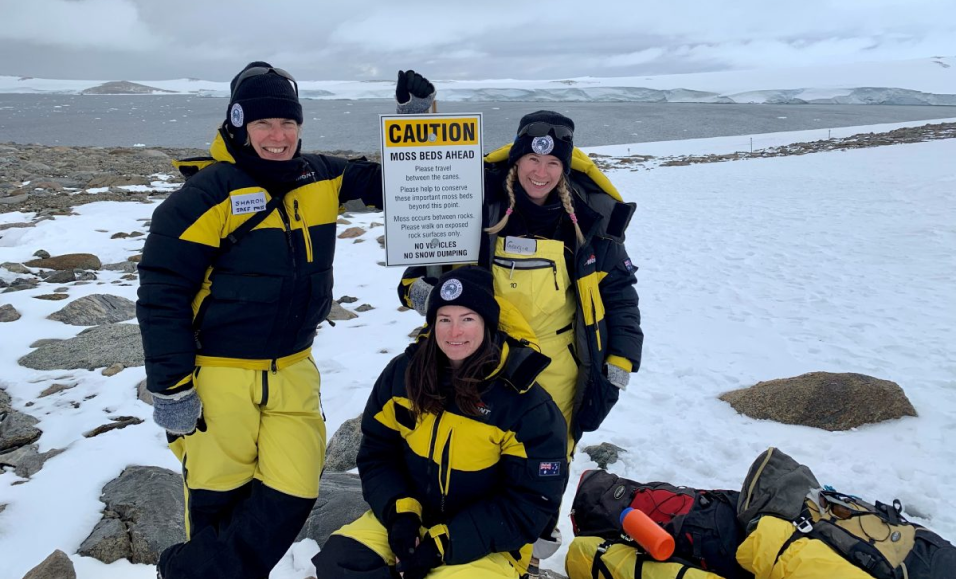
Sharon with fellow moss researchers, Krystal and Georgia.
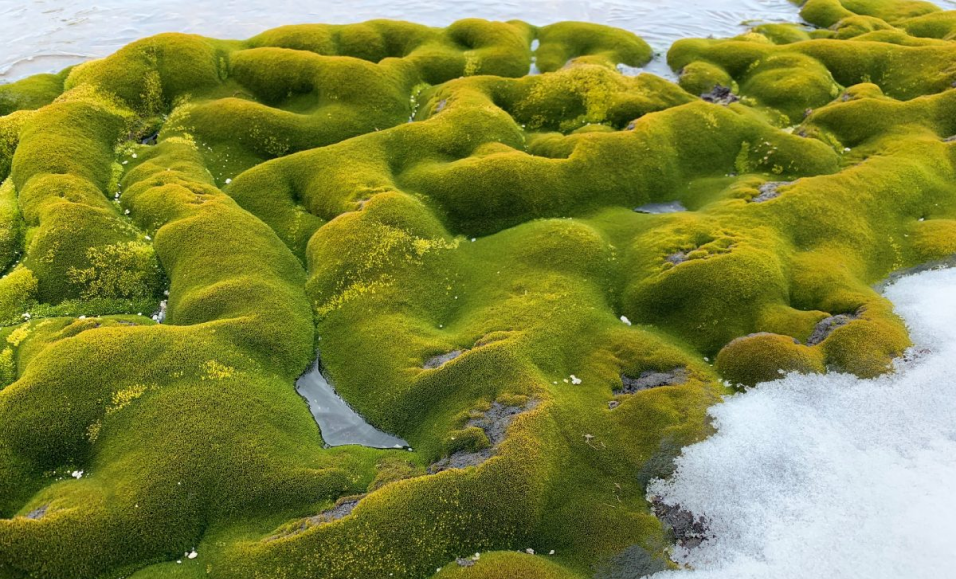
Healthy green moss. Credit: Krystal Randall
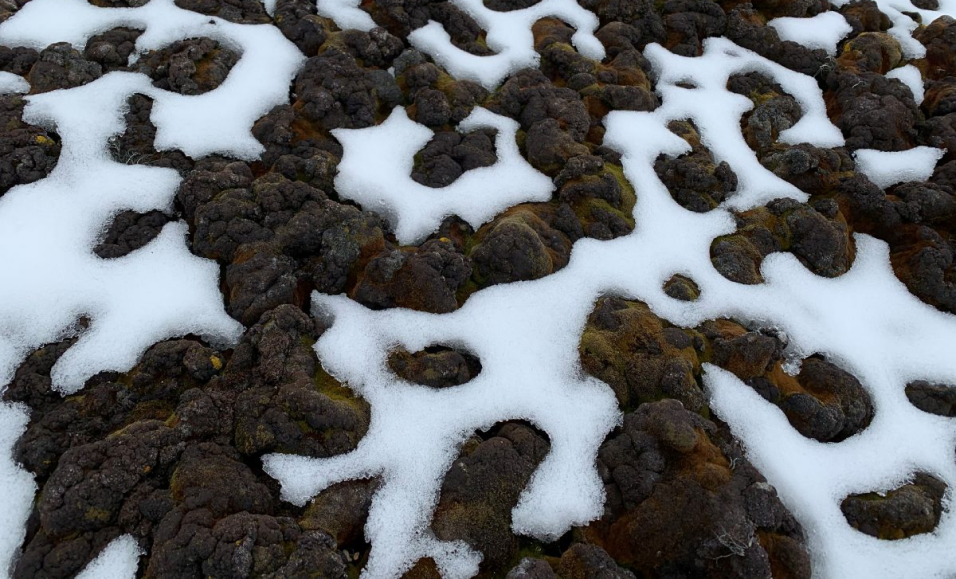
Dead moss. Credit: Krystal Randall
This third report with Distinguished Professor Sharon Robinson, Krystal Randall and Georgia Watson, aka Team Moss, who are all based at the University of Wollongong has been broken into two parts. Part one is with Sharon, our Deputy Director of Science Implementation.
Firstly, what is it about moss that you love so much?
I love the way that there are these amazing patches of green in a sea of ice and rocks. When you look at them under the microscope they glisten and have such perfect translucent leaves, like little jewels. The liverworts are even tinier, with purple heart shaped leaves. Tiny but perfect. I love how velvety they are to touch. I also find the fact that they are so resilient amazing; surviving -40 C in Antarctica to +50C in Australian deserts. That they can dry out and survive, freeze and survive. That these same plants have been growing for hundreds of years, predating human exploration of Antarctica. They can tell us the story of how places have changed.
What were your observations of the moss beds this year? Are they looking healthy? Under stress? A bit of both?
This year there was a lot of snow. Which hopefully is good news for the mosses but we did see a lot of dead black moss and also red stressed moss amongst the green. But we need to analyse the photographs, and check which species are in the micro samples to be sure.
We have been monitoring the same quadrats of moss for 19 years. Some of the quadrats are situated on streams and if the melt is steady the moss stays in place. If we have extreme melt events (e.g. heatwaves) the stream flow may be so strong that the moss becomes dislodged and washes downstream. This year we noticed that half the moss had disappeared from one of the quadrats. It is 7 years since we were able to get to Casey to check the quadrats so we can’t be sure when it happened. It may well have happened two years ago when Casey (like a lot of Antarctica) had a heatwave. But unfortunately, we cannot be sure. Our assumption is that, like in Australia, such extreme weather events can be extremely damaging. While the mosses need water to grow, a steady trickle is much better than a surging flood event!
“I love the interactions on station, talking with plumbers, electricians, meteorological forecasters, pilots, chefs, artists as well as other scientists. Everyone down there has interesting tales to tell.”
— Sharon Robinson, Deputy Director of Science Implementation, SAEF
Most of the moss beds were covered in snow when you arrived. How did you manage this challenge? And what other challenges did you encounter?
The snow makes it particularly hard to take photographs and to conduct flights with spectral sensors because the snow just acts as a highly reflective surface and we can’t see what the moss below looks like (photographs) or use fancy hyperspectral sensors to measure moss health. It also distorts the data somewhat because the moss we could see was where the snow melted out and the really green, healthy moss probably remained covered in snow and invisible! I just hope the snow gives the moss a good drink this year, but I think it may just have been a very short growing season, which given that the growing season is only a couple of months long, is not good.
What is life like on Casey Station? What do you do when you’re not sciencing?
The station community is quite small and I was super impressed with the overall diversity on station this summer. Previously the station was very white and very male-dominated and it was great to see it move to better reflect the workforce back in Australia. I love the interactions on station, talking with plumbers, electricians, meteorological forecasters, pilots, chefs, artists as well as other scientists. Everyone down there has interesting tales to tell and often those discussions can help us improve our experiments or give us ideas for interdisciplinary collaborations. I love walking to the wharf or Reeves Hill to see wildlife. In previous years my favourite thing has been staying in the field huts, which unfortunately we didn’t do this summer but Richard, Felicity, Aimee and Toby did. We also did a science open day, showing people on station moss and tardigrades under the microscopes and also the wonderful drone equipment and sensors that we can use to map moss health. Most people are really keen to understand the science that is happening so I like those opportunities.
What happens now that you’re back home?
We can start to analyse the photographs for moss health (green, red or grey in terms of increasing stress) straight away, but we need to get the samples that are still in quarantine to understand how species have changed. The work will involve a lot of microscopy of the samples and also automated image analysis of the photographs. We want to start using AI techniques to analyse the lichen images more efficiently, so that is new technique development. Finally we collected genetic samples so that we can explore all the organisms that live in our moss forests. I am really curious to know how many other things call the Casey moss beds home.
Finally, why do you want to secure Antarctica’s environmental future?
Antarctica is a truly unique place, at once awe inspiring but also fragile, remote but still impacted by what we do further north. For me it represents somewhere that we have had less impact on so far (compared to other continents) and still have the chance to preserve. The mosses are this, but miniature, tiny plants at the bottom of the earth, being impacted by our changes to climate, ozone depletion, climate heating and even radioactivity from nuclear testing.
Plus because of the massive role Antarctica plays in Earth’s climate we need to do what we can to keep that ice locked away as ice and not lapping at our beaches and coastlines!
